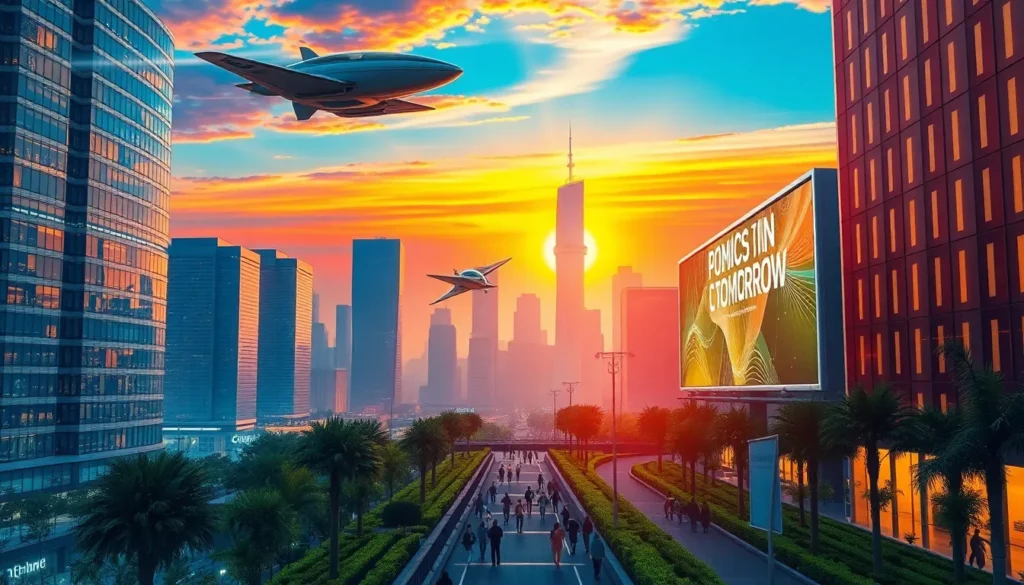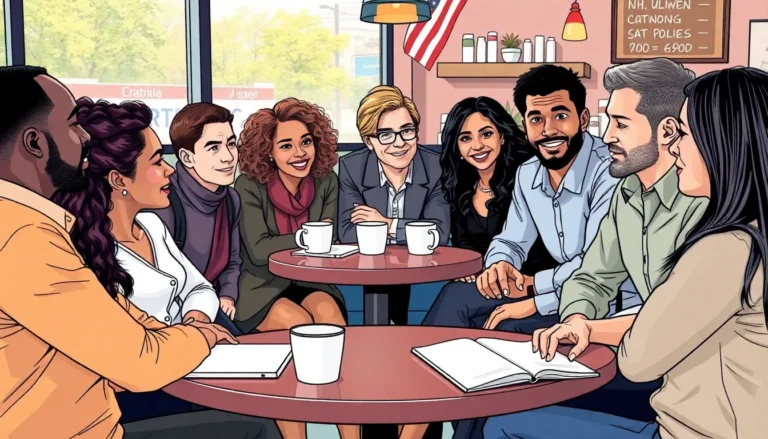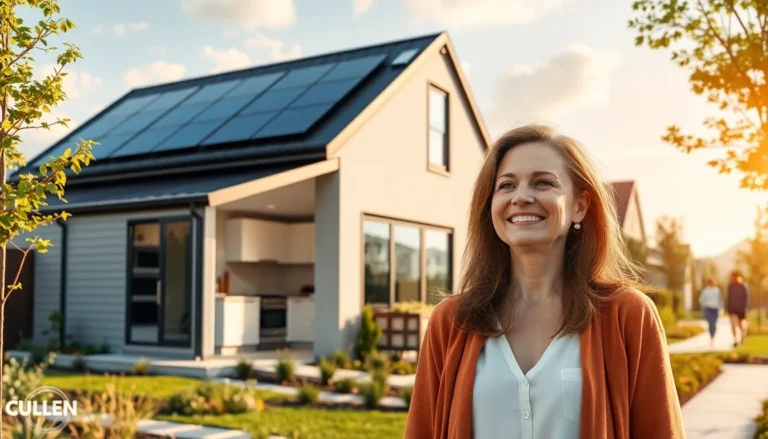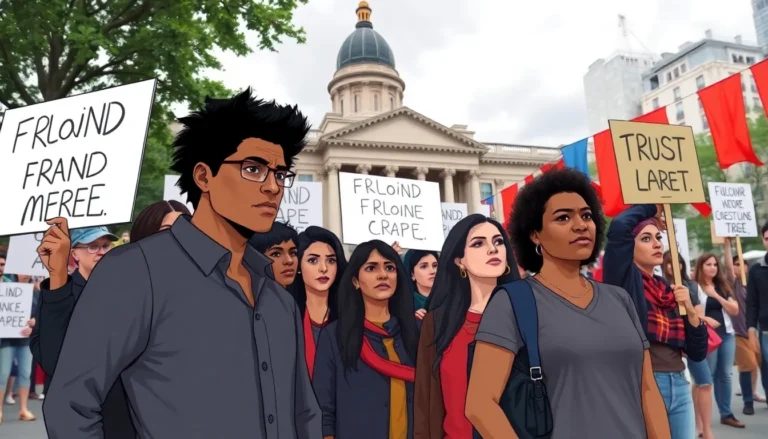Time travel might still be a figment of science fiction, but the predictions from the past about our future are a fascinating journey in themselves. From flying cars to robot butlers, past visionaries dreamed up a world that often feels like it’s straight out of a quirky novel. Yet, as we explore these predictions, it becomes clear that not all crystal balls are created equal.
Some forecasts hit the mark, while others missed it by a mile, leaving us to chuckle at their misguided optimism. Join in on this entertaining ride as we sift through the wild and wacky predictions that shaped our expectations of the future. Who knew that the past could be so hilariously wrong? Buckle up for a delightful look at how yesterday’s dreams compare to today’s reality.
Table of Contents
ToggleOverview of Future Predictions
Predictions from the past reveal fascinating insights into how earlier generations envisioned the world. Visionaries such as H.G. Wells and Jules Verne imagined flying cars, underwater cities, and even lunar colonies. Some forecasts hit the mark, showcasing remarkable foresight, while others, like the idea of robot butlers performing mundane tasks, seem quaint by today’s standards.
Innovative technologies captured the imagination in the early 20th century. For example, the Jetsons television show popularized the concept of household robots in the 1960s, a reflection of the era’s optimism about technological advancements. Early predictions about communication methods also stand out. The telephone and telegraph transformed connectivity, but few anticipated the rise of smartphones and social media.
Notably, predictions often lacked understanding of social dynamics and economic factors. Many futurists underestimated the complexities of human behavior and the limitations of technology. Predictions about flying cars, for instance, surfaced frequently, yet infrastructure, safety, and regulatory issues hindered this dream from becoming a reality.
Household automation remains a recurring theme in past forecasts. Different generations envisioned smart homes equipped with advanced technologies enabling increased efficiency. Despite advancements in artificial intelligence and home automation, many aspects of these predictions remain unfulfilled.
Reflecting on these expectations illuminates the disparity between historic visions and current achievements. Historical insights highlight both the brilliant foresight and the glaring inaccuracies found in past predictions about the future. Today’s technological landscape, with its explosive growth and rapid evolution, continues to inspire future predictions rooted in the dreams of yesterday.
Notable Predictions from the Past
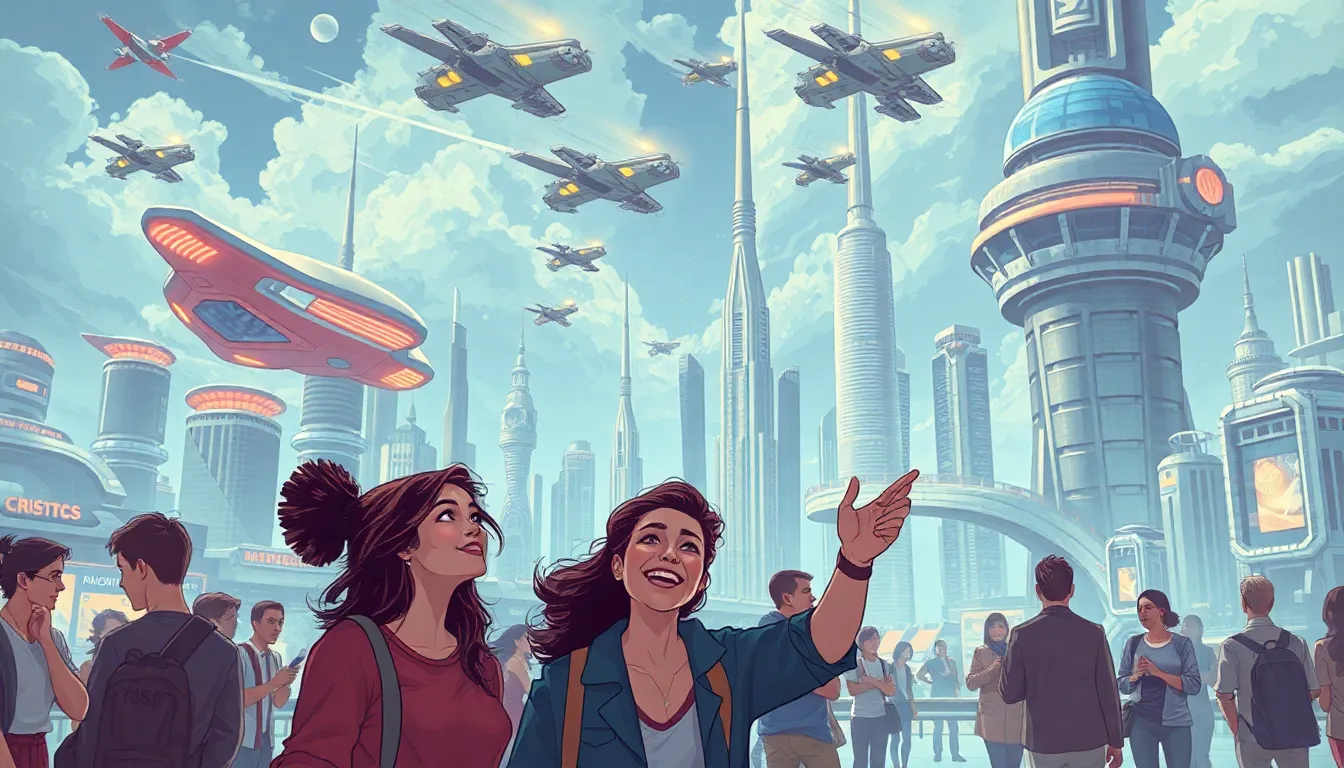
Exploring notable predictions from history reveals fascinating insights into the aspirations and imaginations of past thinkers.
Science Fiction and Technology
Visionaries in science fiction shaped technology predictions that shaped real-world advancements. H.G. Wells imagined time travel and flying machines, offering concepts that paved the way for future innovations. Burt Rutan’s SpaceShipOne demonstrated the potential for commercial space travel, echoing the dreams of earlier sci-fi writers. Jules Verne presented underwater travel in “20,000 Leagues Under the Sea,” which inspired oceanographic exploration. Star Trek introduced the idea of communicators that resemble modern smartphones, highlighting how fiction often anticipates practical technology. Futurists captured the spirit of their eras, leading to achievements that, while originally conceived as fantasy, ultimately influenced the evolution of modern technology.
Political and Social Forecasts
Political and social forecasts also carry weight in understanding historical trends. George Orwell’s “1984” highlighted concerns about surveillance and totalitarianism that resonate today. Similarly, Alvin Toffler’s “Future Shock” anticipated societal disorientation due to rapid change, which aligns with current technological advancements. Predictions about women gaining more significant roles in the workforce emerged in the 1960s, reflecting societal shifts that soon materialized. Climate change warnings from earlier activists showcase awareness of environmental issues long before they became mainstream. Each forecast demonstrates how visionary ideas provide context for contemporary challenges, fostering understanding of ongoing political and social dynamics.
Analyzing the Accuracy of Past Predictions
Past predictions offer both entertaining and enlightening insights into human foresight. By examining factors that influenced these forecasts, it’s possible to understand their varying accuracy.
Factors Influencing Predictions
Cultural context plays a significant role in shaping predictions. For instance, social expectations and technological capabilities of the time directly affect visionary ideas. Innovators like H.G. Wells often reflected the aspirations of their era, leading them to propose ideas aligned with contemporary societal norms. Economic conditions also impacted forecasts, prompting certain predictions to emerge during times of prosperity. Environmental factors, such as concern over urbanization, fueled dreams of sustainable technologies. Often, technological limitations restricted these predictions, as many futurists couldn’t foresee the complexities involved in realization.
Lessons Learned from Inaccuracies
Past inaccuracies provide valuable lessons for futurists today. Misjudgments often stemmed from over-optimism about technology’s rapid advancement. Many forecasted automation and robotics would simplify daily life, overlooking human reliance on personal interaction. Similarly, predictions frequently underestimated societal resistance to change, resulting in failures to adopt new technologies. Awareness of these pitfalls encourages a more balanced perspective on current predictions. Observing how predictions misaligned with reality fosters critical thinking, prompting a more cautious approach for projecting future developments.
The Impact of Future Predictions on Society
Future predictions from the past significantly influenced societal expectations and innovations. Many technological advancements arose from the imaginative forecasts of visionaries. Predictions about flying cars and smart homes inspired engineers and inventors to pursue ambitious projects. Creative ideas from figures like H.G. Wells shaped aspirations within industries, driving progress in technology.
Cultural reflections reveal a society grappling with change. Past predictions often mirrored societal hopes and fears, influencing public perception of technology. Responses to these forecasts shaped discussions about privacy, surveillance, and autonomy. Dystopian visions, like Orwell’s “1984,” sparked debate about governmental control, while optimistic predictions fostered excitement about advancements. The relationship between predictions and societal attitudes highlights a complex interplay that continues to affect modern thought.
The fascinating journey through past predictions reveals much about human creativity and aspiration. As society navigates an ever-changing technological landscape, the dreams of yesterday continue to inspire innovation and provoke thought. While some visions remain unfulfilled, they serve as a reminder of the delicate balance between optimism and realism.
By examining these historical forecasts, individuals can cultivate a more nuanced understanding of current predictions. The interplay between imagination and reality shapes not only technological advancements but also societal expectations. Ultimately, the past serves as both a guide and a cautionary tale for envisioning the future.

